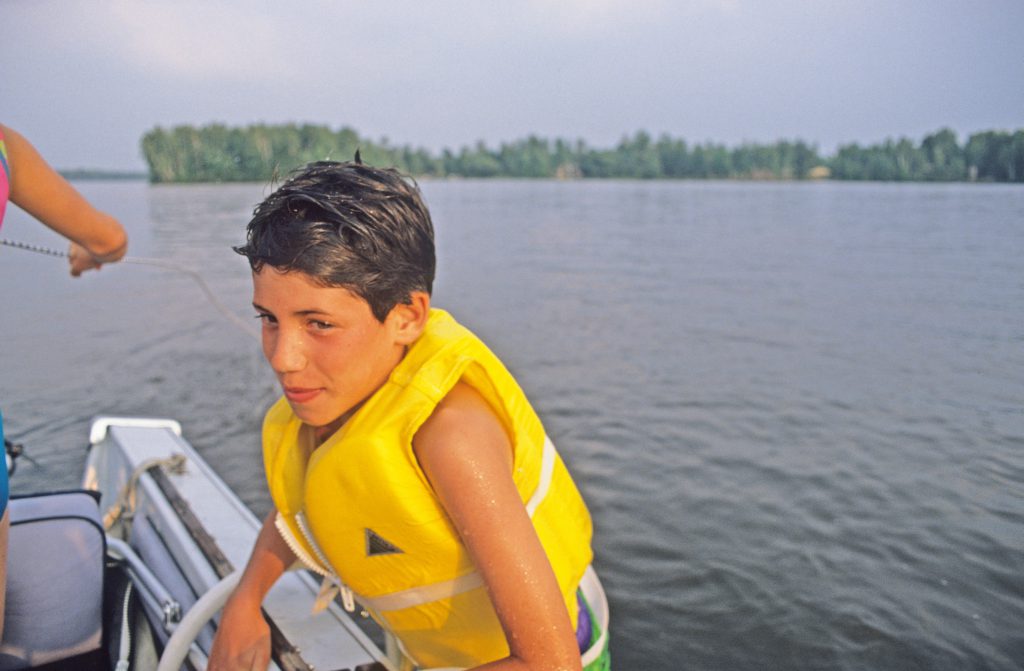Water Safety Always Starts With A Life Jacket
MADISON, Wis. – With over 15,000 lakes and 84,000 miles of rivers and streams, thousands of Wisconsinites and visitors flock to shorelines for a chance to get on the water. What makes for a fun activity can also quickly turn dangerous.
In Wisconsin, 89% of the 2019 boat fatalities were not wearing life jackets. Nationwide, that statistic from national groups is more than 90%.
So far this year, the Department of Natural Resources has documented 14 deaths related to boating activity. Four remain under investigation. The 10 confirmed incidents involved capsized vessels, falling overboard or the individual voluntarily leaving the boat. Nine of the 10 individuals were not wearing life jackets. In one case, the victim had a jacket on – but it was incorrectly secured.
The DNR reminds the public to include safety measures when planning activities near and in bodies of water. Water safety tips stem from a foundational belief of having respect for the rivers and lakes and their shores. Be smart and stay aware because potential danger is often not visible to the human eye.
“When on, or even near, the water, always have an eye on safety. A life jacket can be the assurance your loved ones will make it home,” Krueger said. “Put on your life jacket before you get in the boat, or your canoe, or your kayak or paddleboard or wade along the shoreline. Keep it on until you get back to land. Once your life jacket is on, you can focus on the fun.”
14 BOAT-RELATED DROWNING DEATHS SO FAR IN 2020
Most drowning victims on Wisconsin waterbodies were not wearing life jackets. Wisconsin rivers and lakes can be relaxing and family-friendly places to spend a summer day when you put safety first and respect for the water.
The DNR does not track all drownings – only those fatalities linked to the use of a recreational activity item, such as a boat, kayak or canoe. Boating incident reports to date for 2020 and previous years, as well as the annual overall recreational incidents, can be found here by clicking on “Annual Reports.”
Life jackets will keep you on top of the water if you walk off an unexpected drop-off, a current overpowers you or you fall out of a boat. Putting on a life jacket before wading, playing along shores or getting in a boat gets you ready to focus on the fun.
“There are jackets designed for various sports. I wear one that is so comfortable that I can forget I have it on. The notion that you can put it on as an emergency is happening is unrealistic. Things can go wrong in an instant,” said DNR Recreation Warden Jason Roberts. “Wardens have responded to numerous drowning deaths only to find a life jacket stuffed inside a kayak or floating near the capsized canoe. Or in some cases, the person voluntarily leaves the vessel without a jacket, and fails to make it back.”
WATER SAFETY TIPS
- Enjoy the waters sober and know your limits: Alcohol blurs a person’s judgement, reaction time and abilities. If you are a poor swimmer sober, you are worse with alcohol in your system.
- River shorelines and sandbars pose unseen dangers. Higher, fast-moving water also can tax an individual’s boating, paddling and swimming skills. What may look like a flat, inviting river or stream, may disguise a fast-moving current pulling debris out of your sight and under the surface – and could put you in danger without a lot of warning.
- Rivers present continually changing conditions – most often choreographed by the ever-changing currents. Currents are powerful forces that can reconfigure shorelines, carry and hide debris, and construct or destroy sandbars that otherwise look solid.
- Wear a life jacket as you explore any shoreline. Life jackets will keep you on top of the water if you walk off an unexpected drop off, or a wave or current overpowers you or you fall out of a boat.
- Waves and currents can overpower a person of any size. Currents not easily noticeable standing on the shore can be strong enough to overpower a person and make even the strongest of swimmers unable to swim against it.
- Keep an eye on the weather and let someone know where you are going.
- Paddleboarders should be competent swimmers and need to wear a life jacket. Wisconsin and U.S. Coast Guard law treats paddleboards the same as kayaks and canoes. This means there must be a personal flotation device for each person on board. However, the best way to obey this law and to ensure your safety is to just wear the life jacket.
- More boat safety tips can be found here.
TAKE A SAFETY CLASS
It is easy to complete a safety class. They’re fun, quick and online – and more than worth your time.
FIND THE RIGHT LIFE JACKET
Get your life jacket and plan your summer fun with recreational boating, paddling and swimming. More information about portable flotation devices can be found here.
NOTE: This press release was submitted to Urban Milwaukee and was not written by an Urban Milwaukee writer. While it is believed to be reliable, Urban Milwaukee does not guarantee its accuracy or completeness.























